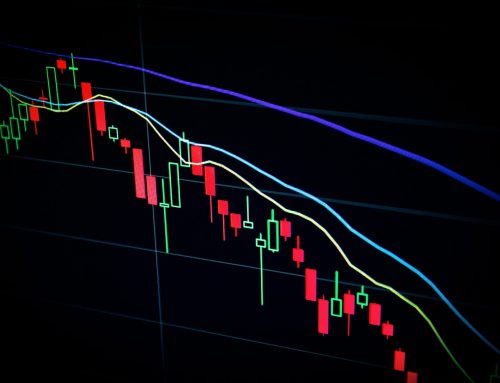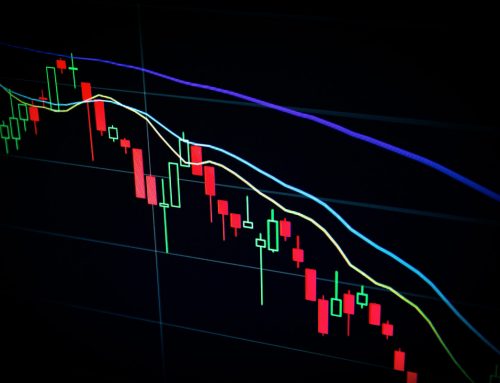While you may not realize it just yet, you probably fall into one of two categories if you’re an investor: a swing trader or a trend trader. But what is the difference between these two trading strategies, and which one best suits you?
Today, we’re going to take a deep dive into the swing trading vs trend trading debate. We’ll define each strategy and then compare and contrast them, so you gain an in-depth understanding of how each one works. Then, we’ll recommend which approach to investing is best for you. Let’s get started!
Featured Courses:
What Is Trend Trading?
Trend traders follow overall price trends and seek to get in during an uptrend and get out before the downtrend. These types of trades can last up to a few months in some cases. This is a very traditional style of investing, as trend traders rely heavily on support and resistance lines.
Many trend traders suffer through short-term reversals in the trend of a stock – which can get dangerous. Say a stock has been trending upwards for a while after breaking past the previous support line – a trend trader will get in at this point. There will likely be downward bounces as a stock’s price rises – which is where a swing trader might get out and secure their modest 5% profit. But, a trend trader trusts the trend they’ve validated – and patiently waits for the trend to continue as they hope for larger profits.
What Is Swing Trading?
Swing trading, on the other hand, does not necessarily follow a stock’s overall price trend. In the grand scheme of things, a stock price could be trending down – but a swing trader may still view it as an opportunity if there are large enough swings on the way down. With swing trading, you’re just looking to capitalize on the swings on a stock’s price.
For example, say a stock has been trending downward for a while. But a momentum indicator suggests that the stock is oversold, and will soon bounce back upwards. A speculative swing trader will attempt to time the market and get in and out with a profit over the course of a few days. For more information on how swing trading works, take a look at our previous blog post.
Trend Trading vs Swing Trading: Breaking Down The Differences
Now that we’ve defined these two trading strategies, it’s time to get into the swing trading vs trend trading debate. Before we can definitively say one is better than the other, we are going to break down the differences – and point out a few similarities, too. Let’s start by looking at trading frequency.
Swing Traders Get In & Out Of Positions Faster Than Trend Traders
A swing trader’s goal is to take advantage of short-term swings along the overall trend of a stock’s price. That means they get in and out of their positions quickly. Trend traders, on the other hand, will ride out a trend for months – patiently sitting through downward bounces. As such, swing traders execute far more trades over the course of a year than trend traders.
Trend followers trade at a lower frequency because their positions pay off larger profits. But, make no mistake – the small wins a swing trader earns over the course of one trend trader’s position add up!
Swing Traders Take Larger Positions Than Trend Traders
Swing traders take on larger positions to make up for the smaller profits they earn per trade. While you may only make between 5-10% profit per trade, the large capital you invest makes this 5-10% worth it. Trend traders, on the other hand, are going after larger profits. Thus, they can wager less capital and still come out with a big win.
Entry & Exit Strategies Differ, Too
Another major difference between these two trading strategies is when one gets into and out of their position.
Trend followers tend to wait for validation in the form of strong momentum indicators. Because they’re following a larger overall trend in a stock’s price, they don’t have to take on as much risk and get in early. They can await confirmation of a trend or await a counter-trend. Swing traders, on the other hand, will hop into an opportunity as soon as momentum and volume indicators show that price is trending upward. Timing matters much more for swing traders since they are only riding a short-term swing.
When it comes to closing their position, trend followers will wait months for the trend to reverse and start showing signs of a price correction. Typically, they’ll place stops at the price point they believe to signal a change in trend. Swing traders, on the other hand, exit their positions as quickly as a few days after entering – or at most, a few weeks. Because price changes can be a bit more volatile in these shorter swings, most swing traders exit their position based on take-profit orders or stop-losses.
Swing Trading vs Trend Trading: Is One Better Than The Other?
We’ve covered the major differences of trend trading vs swing trading. If you’ve spent some time investing in the stock market without too much thought behind your strategy, you can probably already start to see which category you fall into. But if you’re new to trading, you’re probably wondering – is one of these better than the other?
If you ask diehard trend followers and die-hard swing traders their opinion on the matter, they’ll claim their approach is superior. But the answer lies somewhere in the middle, in our opinion.
For the most part, it comes down to personal preference and risk tolerance. There are a lot of pros and cons of swing trading, and the same is true of trend trading. And, the reality is – you don’t necessarily have to choose between the two strategies! As you gain more experience as an investor, it might make sense for you to diversify your strategy a bit with short-term swing trades and longer-term trend trades.
With all that said, we recommend that new traders identify which of these best suits them and stick to it for a while. By focusing your attention on just one strategy, you will gain confidence and mastery far quicker. Here are a few final things to keep in mind in selecting your investment strategy:
- Swing traders execute trades more frequently than trend traders. Thus, it’ll take a bit more time (but not nearly as much time as day trading).
- Trend traders tie up their capital for longer periods of time. Thus, you may have to pass on good opportunities because you’re patiently waiting to secure profits on other positions.
- Swing traders rely entirely on technical analysis, whereas trend traders will take into account the broader economic picture.
Final Thoughts On Swing Trading vs Trend Trading
At this point, there is just one thing left to do – decide which of these investment strategies is right for you, and get started learning all about it! Wondering how to learn swing trading? We have a quick guide to get you pointed in the right direction. You can also learn all about swing trading strategies in our blog.
Whichever trading style you ultimately land on, one thing is for sure: you need the right tools in your arsenal to be successful. With a reliable stock forecasting tool, you gain access to information that allows you to trade in confidence. VectorVest’s one such tool that both swing traders and trend traders alike utilize as a key part of their investing strategy. Here are a few reasons you should check it out:
- See the Overall Market Sentiment – is it positive, or is now the time to close your positions in anticipation of a market downturn?
- Get a Clear Buy, Sell, or Hold Recommendation – you can look up any given stock and we’ll run it through our proprietary mathematical models to deliver a clear recommendation. You can try it here right now with a free stock analysis.
- Simplify All Technical Analysis Into Three Indicators – technical analysis can get complicated and mundane. We’ve simplified all major technical indicators into three easy-to-understand ratings: value, safety, and timing. Put on a scale of 1.00-2.00, you can easily make decisions without the guesswork, human error, or emotion.
- Find Profitable Opportunities On Autopilot – want to make investing brain-dead simple? We have a myriad of prebuilt stock scanners that will pull up our highest-rated opportunities at any given time based on our proprietary VST ratings.
VectorVest will transform the way you trade. You can try it out yourself today with a 30-day free trial. See what the hype is all about. You won’t regret it.







Leave A Comment